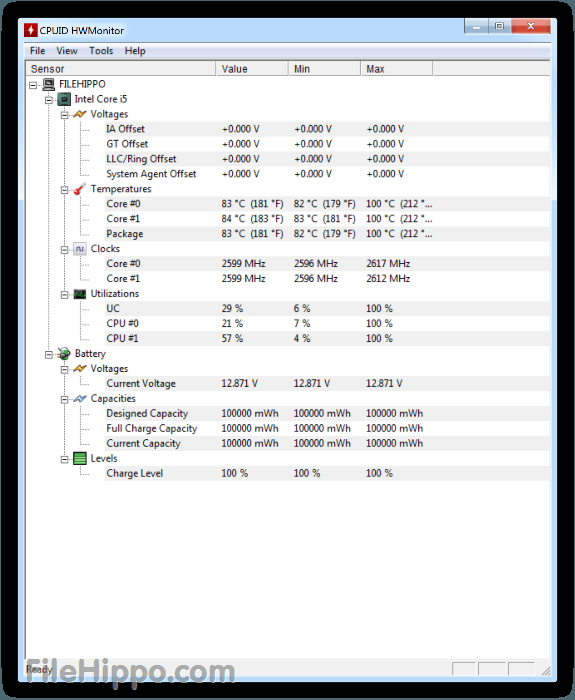

I would assume that you have done the same (forgotten to include the "extended model" in your model number) and your actual CPU's details are "family = 6, model = 23". Publisher: CPUID & (Mike Wodarczyk) Date Updated: Date Added: System Requirements: Windows XP, Vista, 7, 8, 10, 11.

model = ( (EAX > 4) & 0x0F) | ( (EAX > 12) & 0xF0) ).įor example, for model 23 the value in EAX would be 0x?1?7?, and older software (designed before the "model number extension" was introduced) would make the mistake of thinking the CPU is "model 7" when it's not. There is also a paid Pro version with s single user license. This means that to get the full model number you need to do some bit twiddling/shifting (e.g. Is CPUID HWMonitor free This version can be downloaded and used for free. models 8, 10 and 11 are Pentium III, and in the middle of that model 9 is Pentium M).Īlso note that the model number was originally 4 bits (bits 4 to 7 in EAX), and this wasn't enough to handle Intel's "everything is family 6" silliness so they extended the model number with another 4 bits later (bits 16 to 19 in EAX). Modern CPUs contain a set of instructions, that when activated, provide a wealth of information about the. Instead, if "family = 6", you have to use the model number to determine family (and the model numbers are not in a sane order or anything - e.g. CPU-Z is a freeware application that has been around for over 20 years. This mostly means that (on its own) the "family" field is useless for determining the CPU's family. Sadly (due to large amounts of suckage) Intel's "family" numbers went from 5 (Pentium) to 6 (Pentium Pro, Pentium II, Pentium II) to 15 (Pentium 4), and then back to down to 6 again (Pentium M, Atom, Core, Core2, Nehalem, Sandy Bridge, etc). To help keep winstall free and the servers alive, please contribute towards the.


 0 kommentar(er)
0 kommentar(er)
